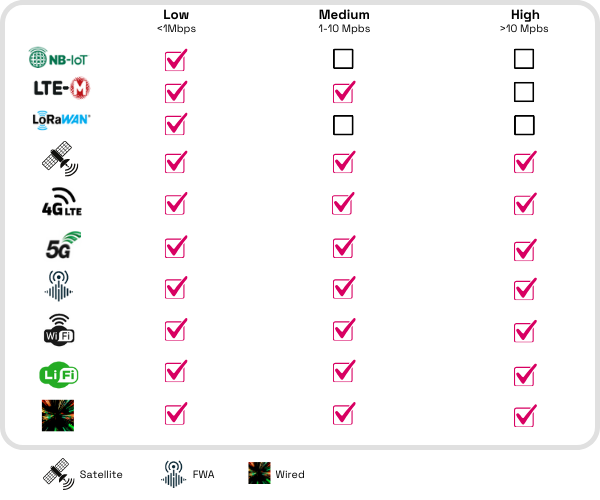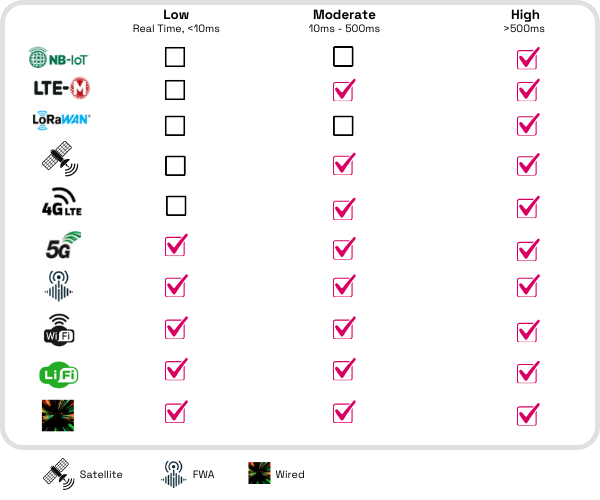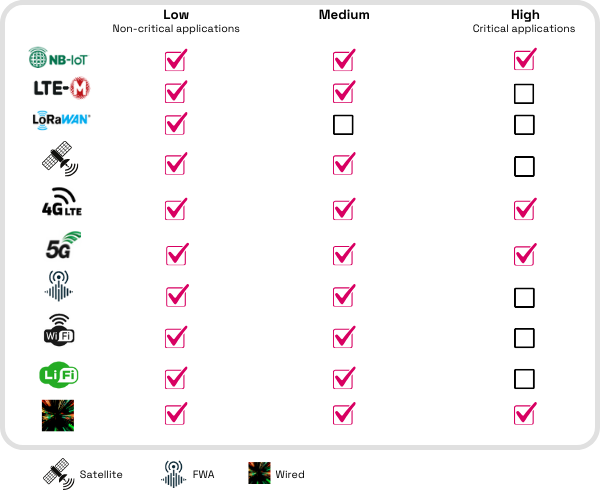To determine your technology needs, consider each Quality of Service (QoS) attribute in turn and identify which technologies meet the requirements identified.
1. Data Rate
Data rate refers to how fast data can be sent or received over a network. The rate needed depends on the activity. Low data rate is fine for simple tasks like sending text messages or emails. Medium data rate is needed for streaming music or making video calls. High data rate is required for activities like 4K video streaming or online gaming, where large amounts of data must transfer quickly.

2. Latency
Latency refers to the delay in data traveling from one point to another. The latency you need depends on the application. Low latency is essential for real-time applications like online gaming or video calls, where even slight delays can cause noticeable issues. Moderate latency works for activities like web browsing or streaming videos, where small delays aren’t noticeable. High latency might be acceptable for tasks like downloading files, where speed isn’t as critical.

3. Reliability
Reliability refers to how consistently a network performs without interruptions or errors. The level of reliability you need depends on the application. High reliability is critical for applications like online banking or emergency services, where even a small failure can have serious consequences. Moderate reliability is fine for tasks like video streaming, where occasional buffering or errors are tolerable. Low reliability may be acceptable for casual activities or sending non-urgent emails.

